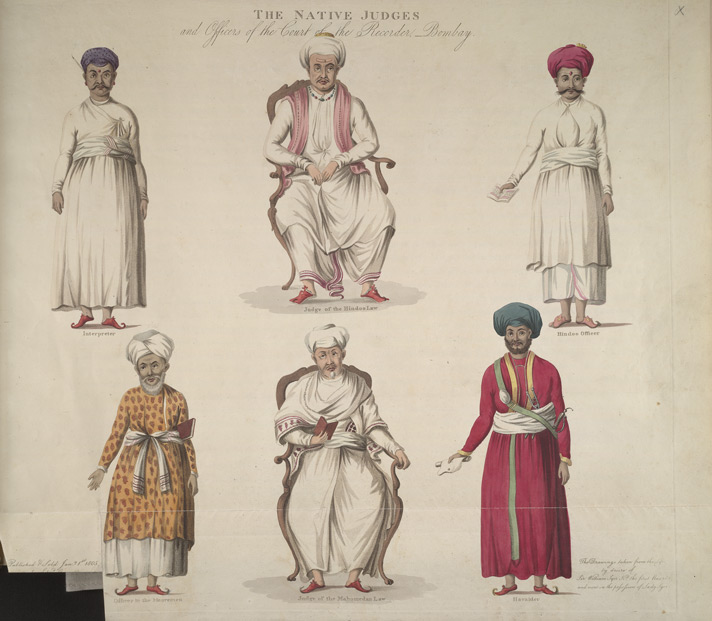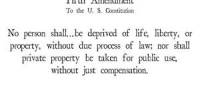Criminal Judicial system Under Muslim Period:
A Judicial System in Medieval India
This period starts with the invasion by Turkish Muslims in the Indian Sub-continent in 1100 A.D. The Hindu kingdoms began to disintegrate gradually with the invasion of Turkish race in the end of eleventh and the beginning of the twelfth century. When Muslim conquered the states, they brought with them the. Turkish idea of administration. The theory of Muslims was based on Quran, their religious book. According to the Quran, sovereignty lies in Allah (God) and the King is His humble servant to carry out His will on the earth. The ruler was regarded as trustee, being the Almighty’s chosen agent.
The whole Muslim period in India may be divided into two sub-periods- the Sultanate of Delhi and the Mughal Empire. By the end of twelfth century Muslim Sultanate was established at Delhi by
Muhammad Ghor. This period existed for thirty, years beginning from 1206 till 1526. On the other hand, in 1526 Delhi Sultanate came to an end when Delhi was captured by Zahiruddin Babar. Babar founded the Mughal Empire in India which existed until 1857.
B Legal System under the Sultanate
The Sultan or the King was the supreme authority to administer justice in his kingdom. The judicial system under the Sultanate was organized on the basis of administrative divisions. A systemic classification and gradation of the courts existed at the seat of the capital, in Provinces, Districts, Parganahs, and villages. The powers and jurisdiction of each court were clearly defined.
Courts at Centre: The courts established at the capital of the Sultanate were as follows: The King’s Court, Diwan-e-Mazalim, Diwan-e-Risalat, Sadre Jehan’s court, Chief Justice’s court and Diwan-e-Siyasat.
- The King’s court was presided over by the Sultan himself. This court exercised both original and appellate jurisdiction in all kinds of cases. It was the highest court of appeal in the realm. In discharging judicial functions the Sultan was assisted by two reputed Muftis highly educated and expert in law.
- The court of Diwan-e-Mazalim and court of Diwan-e-Risalat were the highest courts of criminal and civil appeals respectively. Though the Sultan nominally presided over these courts, in the absence of the Sultan the Chief Justice (Qazi-ul Quzat) presided over these courts. Quazi-ul Quzat was the actual head of the judiciary and he tried all types of cases. Qazi-ul Quzat was appointed by the Sultan from amongst the most virtuous of the learned men in his kingdom. In 1248, Sadre Jahan was appointed by Sultan Nasiruddin. This post was superior to post of Qazi-ul Quzat. Now he became defacto head of the judiciary. The offices of Sadre Jahan and Chief Justice remained separate for a long period, but these were amalgamated by emperor Ala Uddin. However, these were again separated by Sultan Firoz Tuughlaq.
- The court of Diwan-e-Siyat was constituted to decide the cases of rebels and high treason etc. Its main purpose was to deal with criminal prosecutions.
Some of the other officers attached to the court of Chief Justice were as under:
- Mufti: He was selected by the Chief Justice and appointed by the Sultan. He acted as legal expert and in case of difference of opinion between the mufti and judge, the difference was referred to the Sultan for decision.
- Pandit: He was a Brahmin learned in law of Hindu and he acted as expert of law in civil cases of non-Muslims and his position was similar to the Mufti.
- Mohtasib: He was entrusted with the prosecution for the violation of cannon law.
- Dadbak: He was the registrar or the clerk of the court and his duty was to ensure attendance of persons summoned by the court. Sometimes he was also entrusted with the task of trying of petty civil cases.
Provincial Courts: In each Province (Subah) at the Provincial Headquarters four courts were established, namely Adalat Nazim-e-Subah, Adalat Qazi-e-Subah, Governor’s Bench (Diwan-e-Subah) and Sadre-e- Subah.
Adalat Nazim Subah: This court was presided over by the Nazim. In the Province the Sultan was represented by him and like the Sultan he exercised both original and appellate jurisdiction. In original cases he usually sat as single judge. From his judgment an appeal lay to the Central Appeal Court at Delhi. While exercising appellate jurisdiction, the Nazim sat with the Qazi-e-Subah constituting a Bench to hear appeals. From the decision of this Bench, a final second appeal lay before the Central Court at Delhi.
Adalat Qazi-e-Subah: This court was presided over by the Chief Qazi of the Province. This court tried all cases of civil and criminal matters. It also heard appeals from the courts of District Qazis. Appeals from this court lay to the Adalat Nazim-e-Subah. This court also had the supervisory jurisdiction over the administration of justice in his province and to see that the Qazis in districts were properly functioning. Qazi-e-Subah was appointed by the Sultan, but selected by the Chief Justice amongst persons who had established reputation for learning and scholarship of law and possessed a high character and was a man of unimpeachable integrity. Four officers namely Mufti, Pandit, Mohtasib and Dadbak were attached with this court too.
Diwan-e-Subah: This court had both original and appellate jurisdiction in all revenue matters. It had the final authority in the Province over all cases concerning revenue.
Sadre-e-Subah: This was the Chief Ecclesiastical court in the province. This court dealt with the matters relating to grant of stipend, lands etc.
District Courts: In each District, at the District Headquarter, following courts were established:
- The District Qazi’s Court: This court had the jurisdiction to try all civil and criminal matters. It also heard appeals from the decisions of the Parganah Qazis, Kotwals and village panchayats. This court was presided over by the Qazi who was appointed by the Sadre Jahan on the recommendation of the Qazi-e-Subah. This court was also assisted by same four officials as mentioned above.
- Faujder Court: This court had jurisdiction to try petty criminal cases concerning security and suspected criminals.Appeal from this court lay with the court of Nazim-e-Subah.
- Court of Mir Adils: This court dealt with land revenue matters. Appeal from this court lay before the Court of Diwan-e-Subah.
- Court of Kotwals: This court was authorised to try police and municipality cases.
Parganah’s Courts: The Courts of Qazi-e-Parganah and Kotwals were constituted at each Parganah Headquarter. The Court of Kazi-e-Parganah had all powers of a District Kazi in all civil and criminal cases except hearing appeals. The Kotwal was authorised to try petty criminal cases. He was also the principal executive officer of the town.
Village Courts: For each group of villages, a panchayat was functioning to look after the executive and judicial functions. The panchayat decided petty civil and criminal cases of purely local nature.
B Legal System under The Mughal Administration
During the Mughal period (1526-1857) the Mughal emperor was considered the ‘fountain of justice’. The emperor created a separate department of justice (Mahakuma-e-Adalat) to regulate and see that justice was administered properly. The important courts functioning during this period were as follows:
Courts at Capital
Three important courts were functioning at the capital city of Delhi. They were as follows:
(a) The Emperor’s Court: The Emperor’s court presided over by the emperor himself, was the highest court of the empire. This court had jurisdiction to hear both civil and criminal cases. The Emperor while hearing the cases as a court of first instance, was assisted by Daroga-e-Adalat, Mufti and Mir Adil. While hearing appeal the Emperor presided over a Bench consisting of the Chief Justice (Qazi-ul-Quzat) and other Qazis of the Chief Justice’s court. The Emperor referred points for – opinion regarding authoritative interpretation of law on a particular point to the Chief Justice’s court.
(b) The Court of Chief Justice: This was the second important court at the capital, This court presided over by the Chief Justice was assisted by two Qazies of great importance who were attached to this court as puisne judges. This court had jurisdiction to try original, civil and criminal cases and also to hear appeals from the Provincial courts. It had also supervisory power over the working of the Provincial courts.
(c) Chief Revenue Court: This was the third important court in Delhi. It was the highest court of appeal to decide revenue cases. This court was also assisted by the same four officials as mentioned below.
In each court, as stated above, four officials were attached- Daroga-e-Adalat, mufti, Muhtasib and Mir Adil. Apart from the above-stated three important courts, there were also two courts in Delhi. The court of Qazi-e-Askar was a special court to decide military matters. This court moved from place to place with troops. Another court was the court of Qazi of Delhi which sat in the absence of the Qazi-ul-Quzat to decide local civil and criminal matters.
Provincial Courts
In each Province there were following three types of courts:
(a) The Governor’s Court (Adalat-e-Nazim-e-Subah): The Governor or Nazim presided over this court and he had original jurisdiction in all cases arising in the Province. This court had also jurisdiction to hear appeals from the subordinate courts. Further appeal from this court lay to the Emperor’s court. This court had also supervisory power over the administration of justice in the Province. One Mufti and a Daroga-e-Adalat were attached to this court.
(b) The Provincial Chief Appeal Court (Qazi-i-Subah’s Court):
This court heard appeals from the decisions of the Qazis of the districts. The powers of Qazi-i-subah were co-extensive with those of Governors. This court had original civil and criminal jurisdiction as well. The officers attached to this court were, Mufti, Mohtasib, Daroga-e-Adalat-e-Subah, Mir Adil, Pandit, Sawaneh Nawis and Waqae Nigar.
(c) Provincial Chief Revenue Court (Diwan’s Court): This court presided over by Diwan-e-Subah had original and appellate jurisdiction in all revenue matters. An appeal from this court lay to the Diwan-e-Ala at the Imperial capital. Four officers attached to this court were- Peshker, Darogha, Treasurer and Cashier.
District Courts
In each district there were following four courts:
(a) District Qazi: The chief civil and criminal court of the district was presided over by the Qazi-e-Sarkar. This court had jurisdiction to try all civil and criminal matters. Appeal from this court lay to the Qazi-e-Subah. Qazi-e-Sarkar was the principal judicial officer in the District. Six officers were attached to this court- Darogha-e-Adalat, Mir Adil, Mufti, Pandit, Mohtasib and Vakil-e-Sharayat.
(b) Faujdar Adalat: This court presided over by a Faujdar had jurisdiction to try cases concerning riots and state security. An appeal lay to the court of Governor from the decisions of this court.
(c) Kotwali Court: This court presided over by a FCotwal-e-Shahar decided all petty criminal cases. Appeals from this court lay to the Qazi-e-Sarker.
(d) Amalguzari Kachari: This court presided over by an Amalguzar decided revenue matters. An appeal from this court lay to Diwan-e-Subah’s adalat.
Parganah’s Court
In each Parganah there were three courts:
(a) Qazi-e-Parganah’s Court: This court had jurisdiction over all civil and criminal cases arising within its original jurisdiction. This court had no appellate jurisdiction. Appeal from this court lay to the court of District Qazi.
(b) Court of Kotwal: This court decided all petty criminal cases. Appeals from this courts’ decision lay to the Court of District Qazi.
(c) Amin-e-Parganah: This court presided over by an Amin decided all revenue matters. An appeal from this court lay to the District Amaguzar.
Village Courts
In each village two types of courts were working- court of village panchayat and the court of Zaminder. The village panchayat consisted of five persons headed by a headman. The panchayat had the power to decide petty local civil and criminal matters. No appeal was allowed from the decision of a panchayat. In the late Mughal period, Zaminder’s courts were empowered to try petty criminal and civil matters.
B(1)Crime and Punishment in the Mughal Administration
A systematic judicial procedure was followed by the courts during the Mughal period. The judicial procedure was regulated by two Muslim Codes namely Fiqh-e-Firoz Shahi and Fatwai-i-Alamgiri. Evidence was classified into three categories- (a) full corroboration; (b) testimony of a single individual; and (c) admission including confession. The court always preferred full corroboration to other classes of evidence. The Muslim criminal law broadly classified crimes under three heads: (i) crimes against God; (ii) crimes against the King; and (iii) crimes against private individual. During the Muslim period trial by ordeal as existed in Hindu period was prohibited. Instead three forms of punishments were executed by the courts under Muslim law for above three types of crimes.
(a) Hadd (fixed penalties): This is the form of punishment which was prescribed by the cannon law and could not be reduced or modified by human agency. Hadd meant specific punishments for specific offences. It thus provided a fixed punishment as laid down in Sharia for crimes like theft, robbery, whoredom (zinah), apostasy (ijtidad), defamation and drunkenness. It was equally applicable to Muslims and non-Muslims. The state was under a duty to prosecute all those who were guilty under Hadd. “No compensation was granted under it. For instance, stoning to death was prescribed for adultery or drinking wine, cutting off the right hand for theft etc. All offences for which Hadd was prescribed as punishment are characterised as offences against God, in other words, against ‘public justice’.
(b) Tazir (Discretionary Punishment): This was another form of punishment which meant prohibition and it was applicable to all crimes which were not classified under Hadd. Offences. for which tazir was fixed were all offences against God. It included crimes like gambling, causing injury, minor theft etc. Under Tazir the kind and amount of punishment was left entirely with the judge’s wish; courts were free to even invent new methods oi punishing the criminals e.g. cutting out the tongue, impalement etc. The object was to reform the criminal.
(c) Qisas (retaliation) and Diya (blood money): Qisas meant, in principle, life for life and limb for limb. Qisas was applied to cases of willful killing and certain types of grave wounding or maiming which were characterisd as offences against human body. Qisas was regarded as the personal right of the victim or his next of kin, to inflict a like injury on the wrong-doer as he had inflicted on his victim. Under Qisas the relatives or successors of the murdered person could excuse the murderer. Qisas^ became Diya when the next of kin of the victim was satisfied with money as compensation for the price of blood. This also could not be reduced or modified either by the Q*. zi or the Emperor. In cases where Qisas was available, it could be exchanged with diya or blood money.
B(2)Defects of Muslim Administration of Justice
The Muslim administration of justice particularly the criminal justice in medieval India suffered from many defects. The British people who gradually took over to administer justice here always had an owl-look over the Muslim criminal law. Warren Hastings declared it to be a more barbarous law than anything. The inherent defects of Muslim administration of justice were as follows:
(i) The judicial administration was defective in the sense that there was no separation between the executive and judiciary. The emperor who was the head of the government was also the fountain of justice and administered justice directly.
(ii) In many cases Muslim criminal law was not certain and uniform. In practice it was discovered that the law laid down in Hidaya and Fatwa-e-Alamgiri was mostly conflicting. There were differences of opinions among Muslim jurists which gave the Qazis a good deal of leeway to interpret the law and apply it to a specific fact before him. Thus in each case the interpretation of law depended on the Qazi.
(iii) The Muslim criminal law did not draw any distinction between public law and private law. Criminal law was regarded as a branch of private law. It had not developed the idea that crime was an offence not only against the injured individual but also against the society as well.
(iv) Muslim criminal law suffered from much illogicality. This is because crimes against God were regarded crimes of an atrocious character. Crimes against men were regarded as crimes of a private nature and punishment was regarded as private right of the aggrieved party.
(v) The most defective provision in Muslim criminal law was the provision of Diya. In many cases the murderer escaped simply by paying money to the dependants of the murdered person. Many evil practices developed out of it.
(vi) In cases where murdered person left no heirs to punish the murderer or to demand blood-money no specific provisions was available in Muslim law. A minor heir was to wait till he attained majority for punishing the murderer or demanding the blood-money.
(vii) Though Muslim law tried to distinguish between murder and culpable homicide, it did not rest on the intention or want of intention of the culprit. It rested on the method of weapons employed in committing the crime. This was peculiar and generated grave injustice.
(viii)The law of tazir which provided for discretionary punishment was also very vague which gave too much power to the judges. On the one hand, even innocent persons were punished by the courts while on the other hand, it led to corruption and injustice. Punishment could be unduly severe or ridiculously light as there was no standard or measure for them.
(ix) The law of evidence under Muslim law was very defective unsatisfactory, and of primitive nature which made conviction of offenders quite difficult. For example, no Muslim could be given capital punishment on the evidence of an infidel. In other cases evidence of one Muslim was regarded as being equivalent to those of two Hindus. Evidence of two women was regarded as being equal to that of one man. Again, evidence was to be direct; no circumstantial evidence was allowed. To convict a man for rape, for example, it was necessary to have four witnesses who would swear that they had actually seen the accused in the very act of committing the offence. A thief would be convicted only on the evidence of two men, or of one man and two women. It was an invariable case rule to exclude the evidence of women in all cases under haddor qisas.
(x) The nature of punishment of stoning, mutilation etc were so cruel and inhuman that no flesh and blood could even think of it in a civilized society. The punishment of mutilation meant slow, cruel and lingering death to the unfortunate person who had to undergo it, for he could not adopt any means of livelihood. The manner was one to give gooseflesh in ones body. The culprit was tied down. The executioner took a blunt hatchet and hacked off the hand by the joint of a wrist and the foot by the joint of an ankle. The bleeding stump was immediately immerged into a pot of boiling butter (ghee) in order to stop bleeding.
















